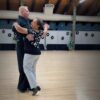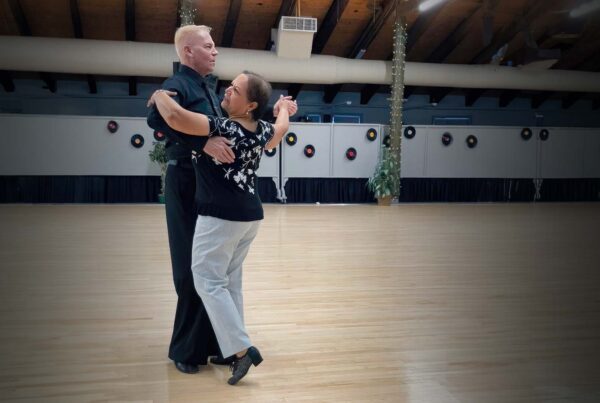I’m an avid cyclist and love to get out on my road bike. During the winter months I use my “pain cave” as part of the Zwift community to stay in shape on the bike. There are some interesting lessons to be learned for dancers from involvement in any athletic activity. Here are some of the things I’ve learned from cycling.
Technique matters
Whether you are lifting weights in the gym, riding a bike, or learning to dance, knowing the right technique is always important. Not only does poor technique hinder your progress, it can cause injury or create a lifetime of bad habits. You may be asking, what technique is there in riding a bike? More than you might think! For example, keeping the knees aligned forward will not only make your riding more efficient, but avoids knee injury. As it turns out, the same technical reality applies to dancers. There’s also technique in how we use energy. Most people ride a bike with “square” pedal strokes which means they push down on the front pedal at the same time that the back pedal is going up. This is inefficient and keeps you from achieving progress. Learning the proper use of energy is just as important in cycling as it is in dancing.
You don’t grow until you try
Some cyclists, just like those who visit the gym, are perfectly happy just keeping things light and easy. They never push the envelope. They never try new things or approaches. That’s fine if it makes them happy but they will never achieve much. To grow, in any activity, you have to give it real, meaningful effort. In cycling, this translates into taking on new challenges like wind sprints, big hills, longer distances and even races. In dance, it translates into trying new dance genres, learning new figures, and taking up competition. I remember a great dance workshop many years ago. The coach had our group of competitive couples focus on different things, setting aside all the details we were usually thinking about to pay attention to only one thing at a time. She encouraged us, at one point, to try our routines while giving it everything we had, full power, just to see how it felt. Although I wouldn’t want to dance like that, it helped me to see areas where I was holding back, thus hurting my progress. It was a great lesson in trying something new and taught me a lot about pushing the boundaries. It’s how we grow as human beings.
Partnership makes things easy
There are, of course, activities that you can do completely solo. But most athletic activities involve some form of partnership. Even cycling, which is an individual activity in many ways, benefits when two people work together as partners. The practice of “drafting” another rider reduces the wind resistance you experience, allowing the rider in back to ease off on the effort involved. Just as geese regularly change who is in the lead for the same reason, cyclists who do this create greater speed with the same amount of effort. Ballroom dancers automatically work in partnership, but that doesn’t mean they always recognize the value of the partner. We need to appreciate what our partner brings to the table and work with them to make the entire partnership more successful. Not only does a good partnership look more beautiful on the dance floor, but it reduces the effort involved by each member of the partnership.
Whether you are lifting weights in the gym, riding a bike, or learning to dance, knowing the right technique is always important.
Things we love to do are more fun when shared
One of the great things about ballroom dancing is the social aspect. We are designed to be social creatures. It’s the essence of community. The other day I was part of a huge cycling event with almost 200 participants on the same ride at the same time. It was invigorating! In ballroom dancing, not only are you connected to another human being, working together to achieve something beautiful, but dance events are even more fun when there are many people involved. Teaching a big group class is really exciting. Meeting new people is awesome. Dancing with a complete stranger is a great thrill. A unique bond develops when you get together with other dancers, just as a bond develops between any group of people who share an interest. It brings us closer together through our appreciation of the shared experience. How important is this? Scientists recently discovered that the most important element for living a long life was social interaction!
Measuring your progress is rewarding
From the time we first learn to read and write, we begin to appreciate the knowledge that we are getting better at something we are attempting. Just try taking away the hoops at a basketball game, or the goals at a hockey or soccer game, and you see how important it is to all of us that we measure how we are doing, no matter what the activity. In cycling we measure our average speed, the average wattage our muscles produce, and our heart rate as it compares to effort. Then we actively work to improve those metrics. Almost anything we strive for becomes an empty exercise if we can’t measure progress. Dancing is no different. There are a variety of ways to measure how you are doing, from your progress in lessons to the feedback of others. But I believe the best way is through competition. I love competing, for a number of reasons. Best of all, being judged by highly experienced experts is a real-world process that guides us realistically as we compare our results over time. Set incremental goals and you’ll have many small victories that you can celebrate along the way.













